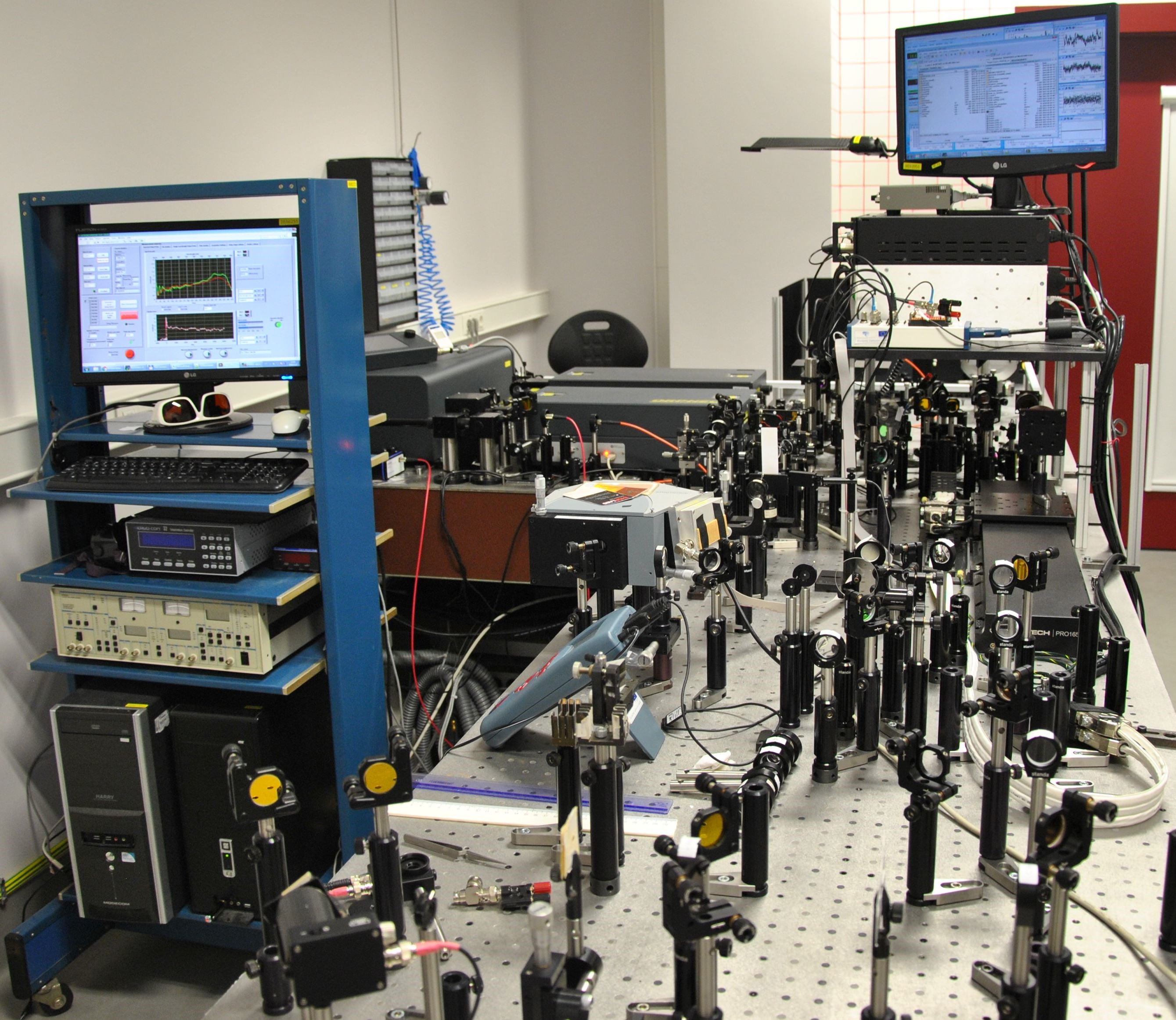
Test benches up and running: tick
Barbara Warmbein, 25/05/2019

Setup of the pump-and-probe testbench in Vilnius, Lithuania. (Image: AIDA-2020 WP14)
The lives of calorimeter experts looking for the latest technology to test their scintillating fibres have just become a fair bit easier. With the completion of task 14.2.1 of AIDA-2020 Work Package 14 on Infrastructure for Advanced Calorimeters, nine different stations for a broad variety of tests are now available in six different labs across Europe, from Lithuania to Italy. Data from the various studies is available for all kinds of detector R&D.
Developers of calorimeters for future projects are constantly on the hunt for the best materials and technologies for their detectors. They also need to test these materials and technologies thoroughly, in order to know whether they meet the requirements for the challenging environments future project pose. Another reason for these thorough tests is that they need to know their materials extremely well. Scintillating fibres transport the information of the passing particles. They have been used in calorimeters for a long time, and scientists are constantly seeking ways to improve them. They need the latest test infrastructure for these improvements, as fast timing properties and radiation tolerance move more and more into focus.
Within the AIDA-2020 Work Package, nine different test benches have been developed further and upgraded.
At the University of Vilnius in Lithuania, for example, researchers are trying to get to an in-depth understanding of the scintillating effect itself. The scintillation properties are successfully in use all the time, but some of the parameters are not very well understood. The station also helps understand the fibres’ timing properties with the help of a pump-and-probe setup, where a first light pulse – pump – activates the material and a second pulse – probe – investigates the response of the system.
As for the other tests, scientists can measure their prototype’s signal uniformity in Zurich or the light attenuation length in Milan or at CERN. They can also analyse the light attenuation variation during irradiation at Brunel University in the UK or make use of an irradiation test bench at CERN. Various other setups and test infrastructure are also at their disposal.
“It’s thanks to all these developments through AIDA-2020 that scientists have the chance to do really generic R&D,” says Etiennette Auffray from CERN, who led the task. “AIDA has brought many people together and created a network across many different projects from which all of us can benefit. It bundles together the work and knowledge of many years and thus provides a lot of opportunity for “cross-fertilisation.”
One of the new developments of recent years is the study of scintillating crystals fibres.
Etiennette Auffray is also the spokesperson of the Crystal Clear Collaboration that investigates the use of scintillating crystals for novel ionising radiation detectors for high-energy physics, medical imaging and industrial applications. Some of the newly equipped test benches have already played a role in characterising fibres developed under Crystal Clear and the European RISE project Intelum, having lead to further research and development for crystal fibres to be used in upgrades of the LHC experiments.
